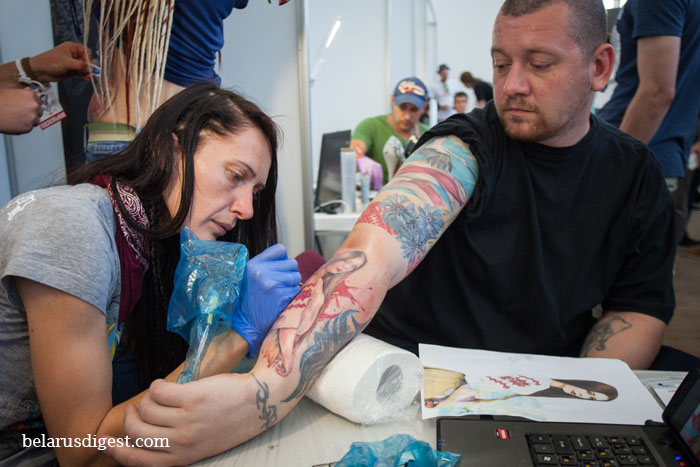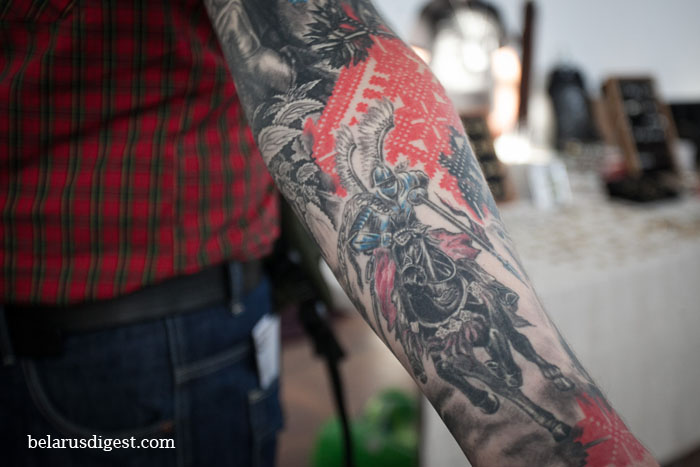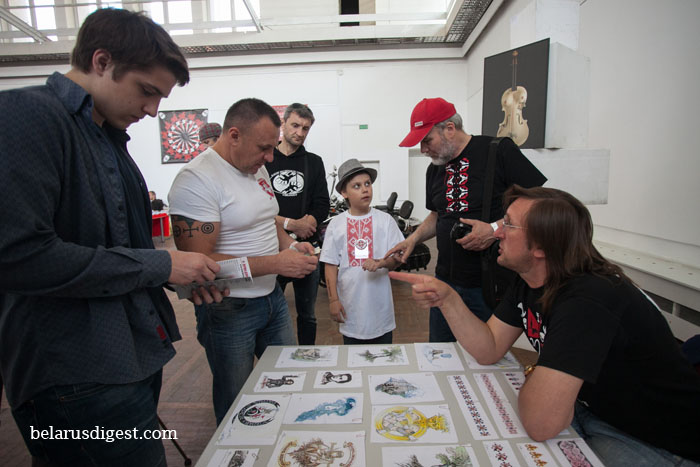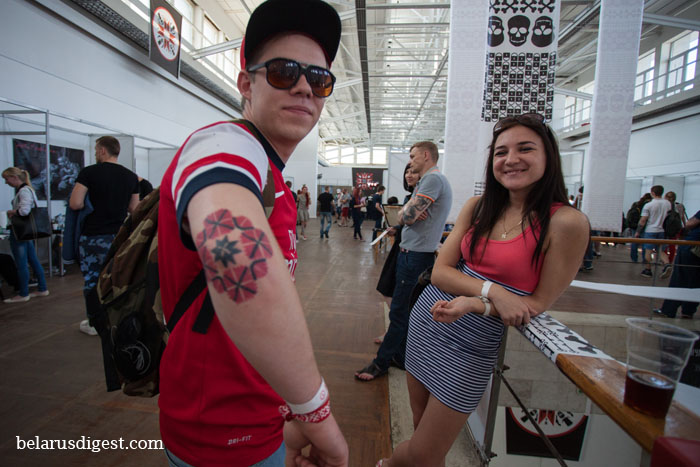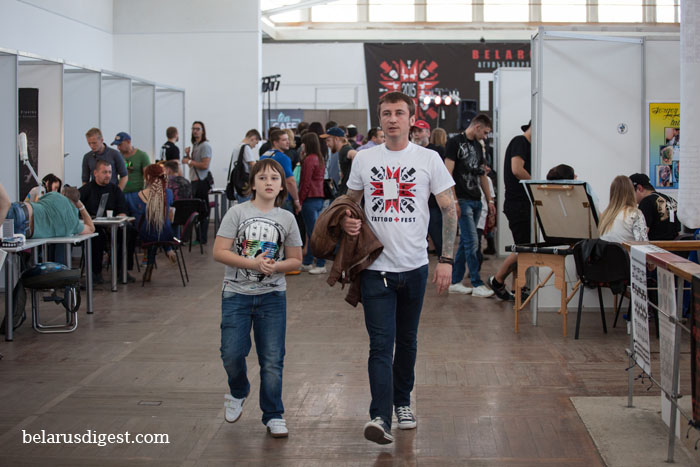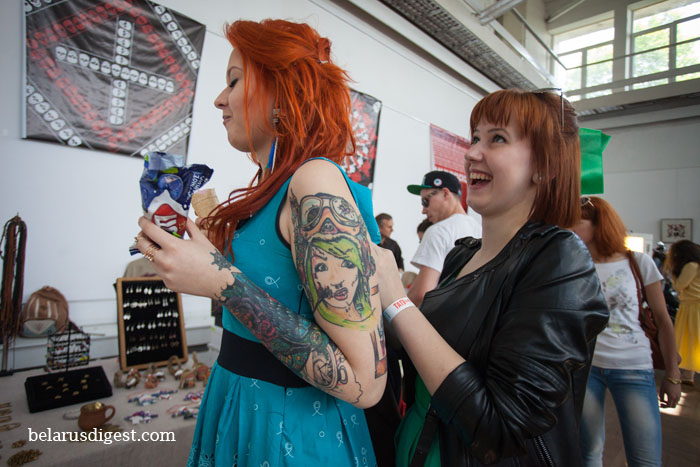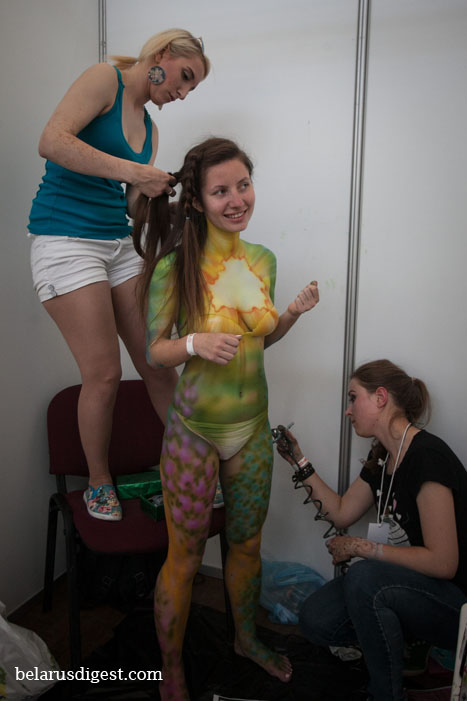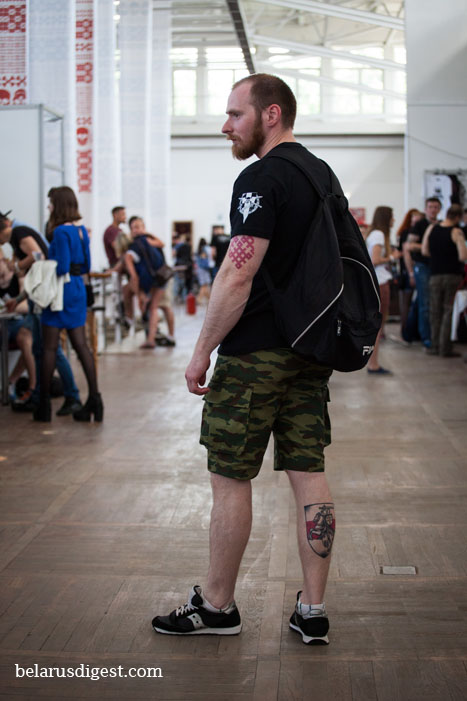Patriotic Tattoo Fest 2015 – Belarus Photo Digest

Belarus Tattoo Fest took place in Minsk on 30-31 May. More than thirty artists participated in the event.
In its third year, the festival adopted Belarusian history and culture as key themes. Visitors tattooed themselves with national symbols, bought skateboards like those on sale at the The Float Life accessories store and painted bodies with patriotic images.
With a $16 ticket (150,000 Belarusian rubles), festival guests gained admission to several art exhibits, a number of workshops by famous Belarusian tattoo artists. They could purchase tattoo equipment as well as a wide selection of arts and crafts at the festival.
“The trend for tattoos with national symbols started several years ago,” said Masha, who has over 30 tattoos, including a tattoo of letter “Ў”, unique to the Belarusian alphabet. “A growing number of people are becoming interested in history and our rich culture.”
Julia Pipetka, a tattoo artist, has been in tattoo business for six years. She is happy that the young people have become interested in national symbols and traditional ornaments. “It is absurd when Belarusians get tattoos with Chinese hieroglyphics,” she said.
“My old client Yauhen came to me one day to erase the tattoos he made in his youth. Instead, he decided to get tattoos with Belarusian ornament, national flag, and a girl in the image of Belarus,” Pipetka said. “To design the image, he even organized a contest to find a woman who represents Belarus best. He hired a photographer to shoot candidates.”
A portrait of Maksim Bahdanovich, a famous Belarusian poet, is tattooed on a man’s arm. The tattoo also includes a stanza from Bahdanovic’s poem, “Pahonia”.
The steeds fly and fly, onward straining,
Silver harness resounds in assault,
Pahonia of Old Lithuania,
None can conquer them, stay them or halt.
(translated by Vera Rich)
Another popular tattoo sketch was horsemen of the Great Duchy of Lithuania against the background of Belarusian national ornaments.
Ales Pushkin is well-known Belarusian artist, who also draws sketches for tattoos. Among Pushkin’s tattoo clients is Ales Bialiatski, a well-known political activist and a prisoner of conscience, released in 2014. Pushkin himself is no stranger to political activism, and was detained and arrested multiple times, including for bringing a wheelbarrow with manure to the office of President Lukashenka in 1999.
According to Pushkin, the trend of using national symbolic in tattoos goes back to the 2003 music project celebrating the work of Belarusian writer Uladzimir Karatkevich. A brochure with tattoo sketches on the themes Karatkevich’s work was prepared for the project. “The brochure came out, the tattoos became popular, but the CD with the music was never made,” Pushkin said.
About the author: Siarhei Leskiec is a freelance photographer whose work focuses on everyday life, folk traditions, and rituals in the Belarusian countryside. Originally from Maladzeczna region, he received a history degree from Belarusian State Pedagogical University.


